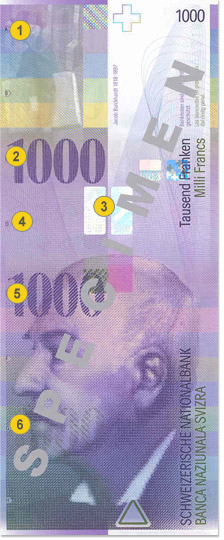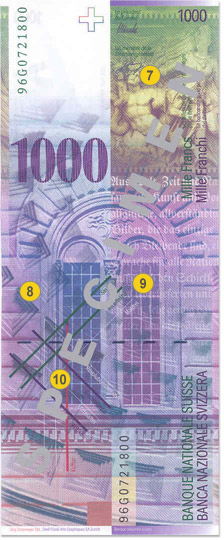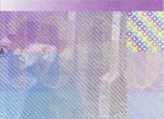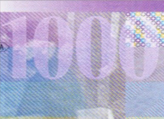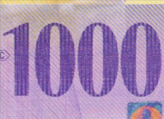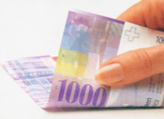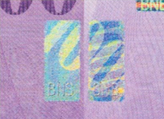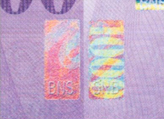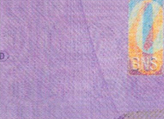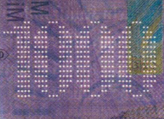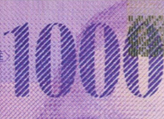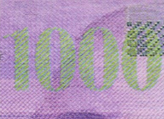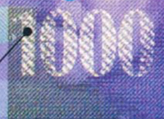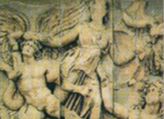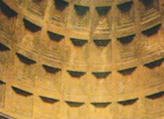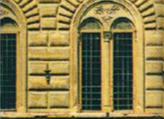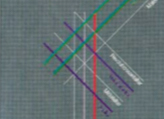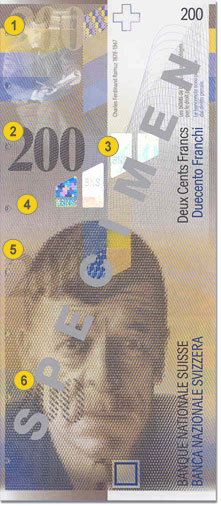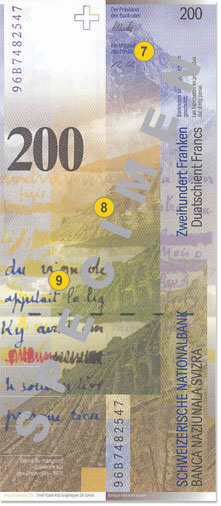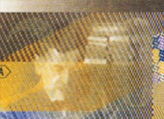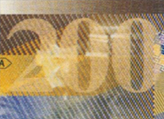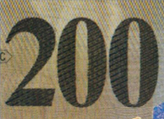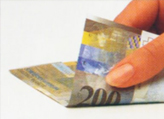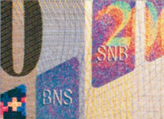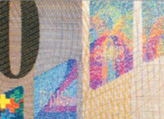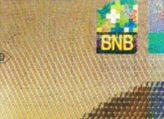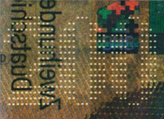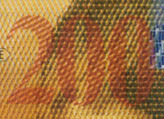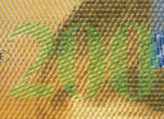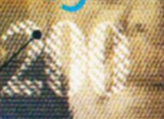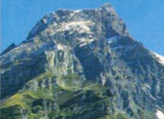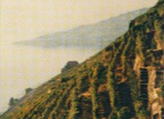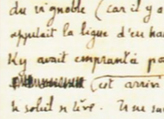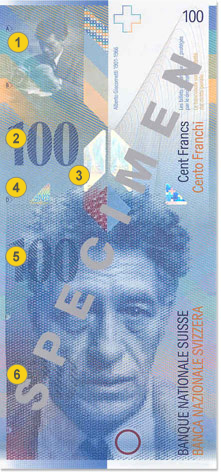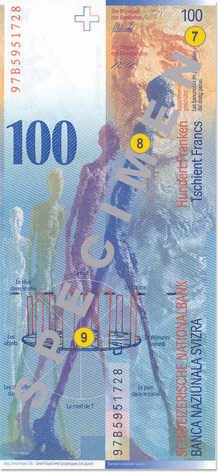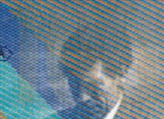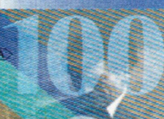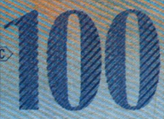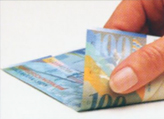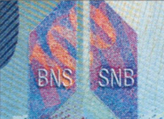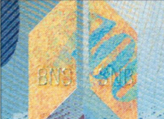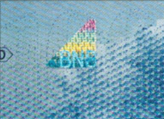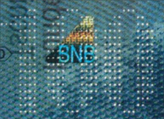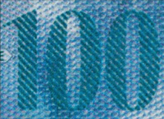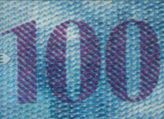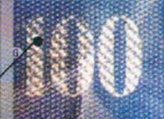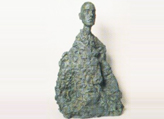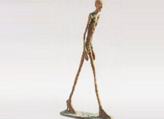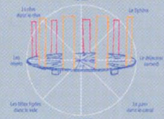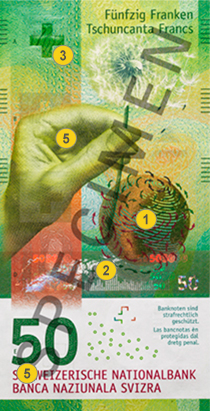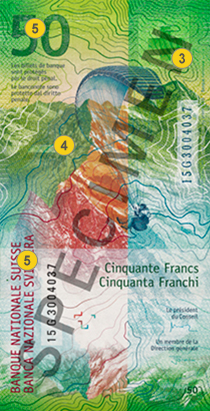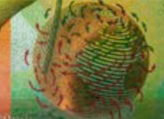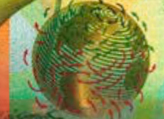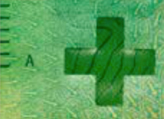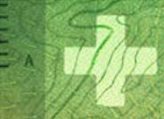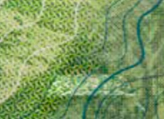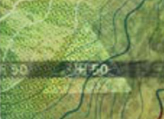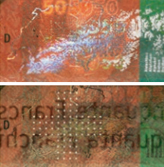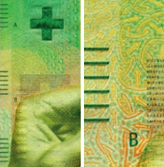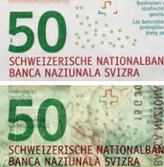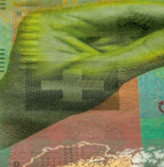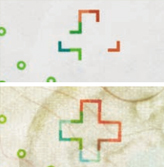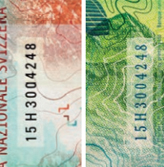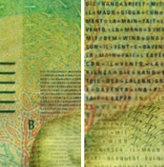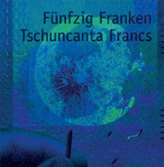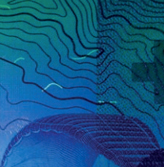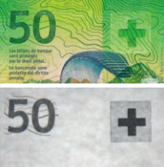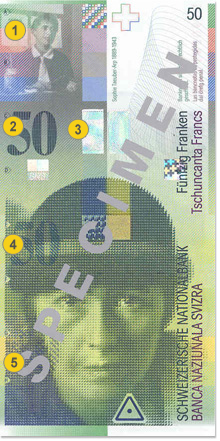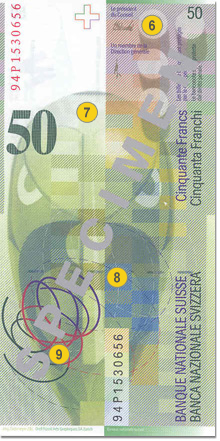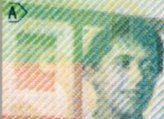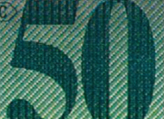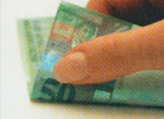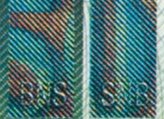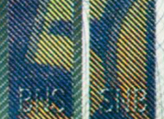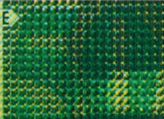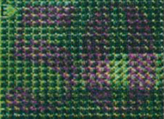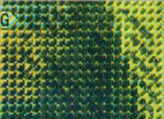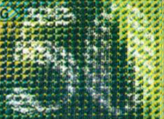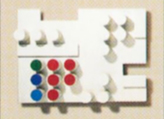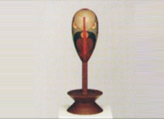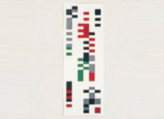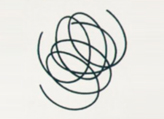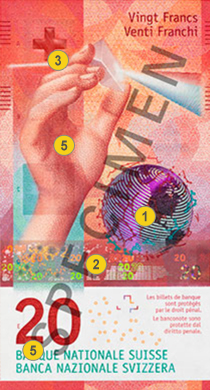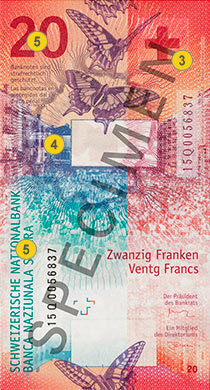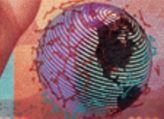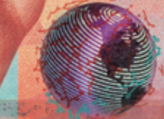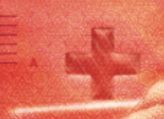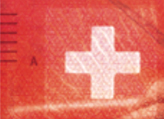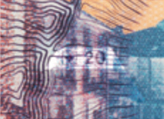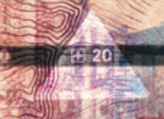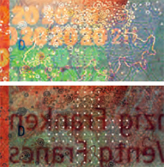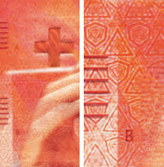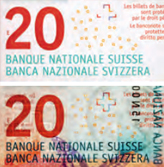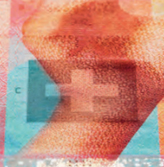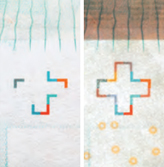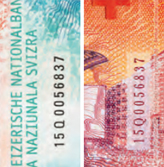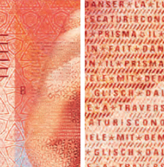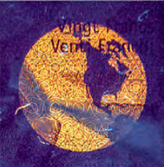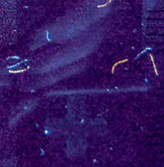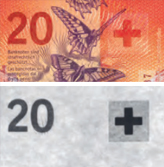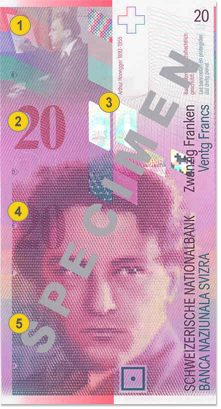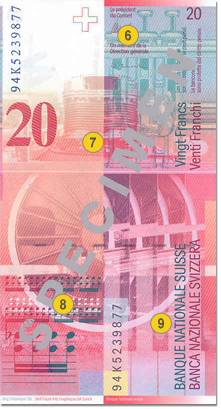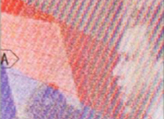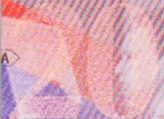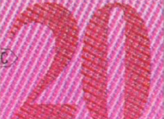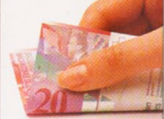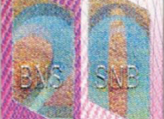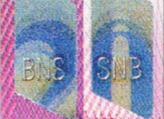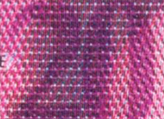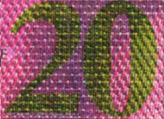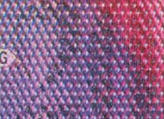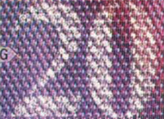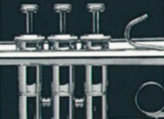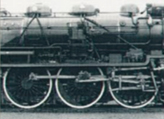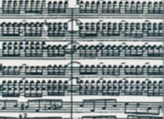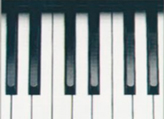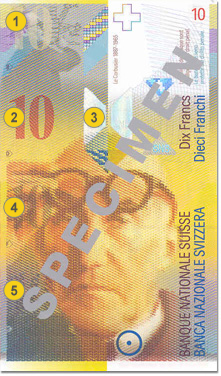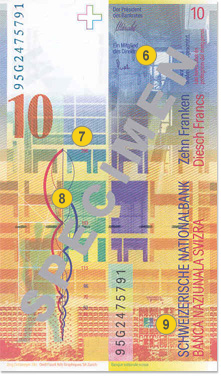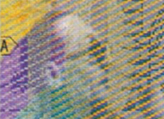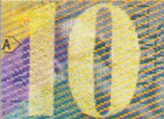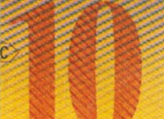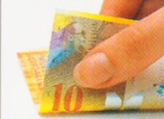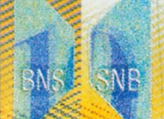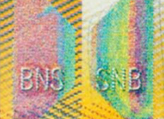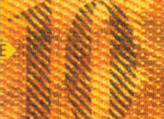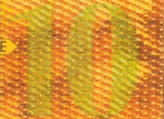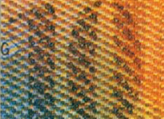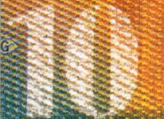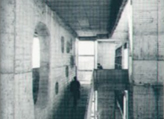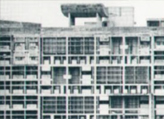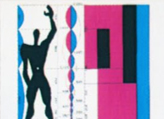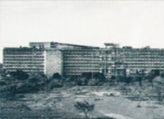The Swiss Franc security features
The Swiss francs banknotes has 6 different banknotes in different values and sizes: 10, 20, 50, 100, 200 and 1000. The Swiss francs are the legal and official currency of the Switzerland. Each denomination features a portrait of a famous Swiss writer, artist or culture person. From 2016 new banknotes has started to change old ones. On new banknotes you won't see any famous Swiss person, banknote creatores decided to publish views related with organisational talent, creativity, wealth of experiences, humanitarian tradition, scientific expertise and communicative flair.
The new 20-franc note has arrived. Following the launch of the 50-franc note, this is the second of six denominations in the new banknote series being phased in by the Swiss National Bank between 2016 and 2019. Notes from the eighth series will remain valid until further notice.
More than 20 years have passed since the last banknote series was issued, and during this time, the world has undergone a technological quantum leap. A new series is therefore required in order to maintain our high security standards and protect the public against counterfeits. The new series equips Switzerland with banknotes that are both more modern and more secure than the previous generation.
All Swiss francs banknotes: 1000, 200, 100, 50, 20, 10 (20 new, 50 new additional) security features in detail
- 1000 Swiss francs banknote
- 200 Swiss francs banknote
- 100 Swiss francs banknote
- 50 new (9th series) the Swiss francs banknote
- 50 Swiss francs banknote
- 20 new (9th series) the Swiss francs banknote
- 20 Swiss francs banknote
- 10 the Swiss francs banknote
1000 Swiss francs banknote security features. Recognize your 1000 Swiss francs banknote is not fake, spot a fake banknote
1000 Swiss francs banknote was designed by Jörg Zintzmeyer, printed by Orell Füssli (Zurich). The main colour is Purple. The 6 special security features on the new banknote are easy to find and check. They are all on the front of the banknote and are concentrated on the denomination, the number 1000. The features are positioned vertically one under the other. The most striking feature, the moving number, is situated in the middle of the banknote. Follow the arrows A, C, D, E and G on the left-hand side of the banknote and you will quickly find the other five features.
1000 Swiss franc note size: 74 x 181 mm
Front Portrait: Jacob Burckhardt, Historian of art and culture.
Back view: Antiquity, Ancient Architecture, The Renaissance, The view of history.
1000 Swiss francs Issued 1 April 1998 - Present
|
1000 Swiss francs banknote. Front. The portrait on the front of the 1000-franc note shows Jacob Burckhardt (1818-1897), one of the most distinguished German-speaking historians of culture of the 19th century. He is famous primarily for his well-founded and artistically sensitive interpretation of the Italian Renaissance and his guide to the art treasures of Italy, a work that has become a classic. Burckhardt's works form the basis for the modern scientific study of art history. Even today, his concept of the Renaissance shapes our understanding of the modern age. As a historian, Jacob Burckhardt applied his literary skill to historiography, and his work is considered a classic of academic prose. In particular, he described the main currents in comparable periods which remained constant over time. Instead of presenting a linear description of history, Burckhardt approached the task from a cross-cultural perspective. 1000 Swiss francs banknote. Back. |
1) Magic number. The number 1000 is printed in a shimmering, transparent colour. Depending on how the light falls on the banknote, the number appears and disappears. Tilt the banknote slowly towards the light until you can see the number. 2) The coloured number.. The number 1000 is clearly visible and its print is rough to the feel. If you rub the coloured number on a sheet of paper, it will leave distinct traces. 3) The moving number. In the middle of the banknote the number 1000 is seen on a special silver foil known as Kinegram. Tilt the banknote back and forth. The moving number on the Kinegram appears to rotate by 90 degrees and to become smaller or larger. 4) The perforated number. The number 1000 is made up of very fine perforations, a feature known as microperf. When held up to the light, the number 1000 is seen as a perforated surface. 5) The chameleon number. The number 1000 is printed with a special ink and changes colour depending on how the light falls on the banknote. Tilt the banknote slowly away from you or towards you: watch how the colour of the chameleon number changes. 6) Glittering number. 7) Antiquity. For Jacob Burckhardt, the Pergamon Altar in Berlin was the central expression of Greek art and culture. The section of the frieze shows the struggle between the Titans and the Olympic gods. The altar reflects Burckhardt's unsentimental approach to Greek antiquity. 8) Ancient architecture. The Pantheon in Rome, a picture of which hung in Burckhardt's study, is considered the greatest and most perfect rotunda in ancient Roman architecture. It became a model for the most important buildings of the Renaissance. 9) Renaissance. The Renaissance assumes an especially prominent place in Burckhardt's opus. The 1000-franc note shows a section of the façade of Palazzo Strozzi in Florence, whose windows are considered to be the finest of that era. The text in the background is taken from Burckhardt's 'Reflections on History'. 10) View of history. Jacob Burckhardt breaks history down into historical epochs. He describes them according to the changes that took place in architecture, sculpture and painting and relates these phenomena to government, religion and culture. |
200 Swiss francs banknote security features. Recognize your 200 Swiss francs banknote is not fake, spot a fake banknote
200 Swiss francs banknote was designed by Jörg Zintzmeyer, printed by Orell Füssli (Zurich). The main colour is Brown. The 6 special security features on the new banknote are easy to find and check. They are all on the front of the banknote and are concentrated on the denomination, the number 200. The features are positioned vertically one under the other. The most striking feature, the moving number, is situated in the middle of the banknote. Follow the arrows A, C, D, E and G on the left-hand side of the banknote and you will quickly find the other five features.
200 Swiss franc note size: 74 x 170 mm
Front Portrait: Charles Ferdinand Ramuz, Writer.
Back view: The mountain world, The lake, The manuscript.
200 Swiss francs Issued 1 October 1997 - Present
|
200 Swiss francs banknote. Front. The portrait on the front of the 200-franc note shows Charles Ferdinand Ramuz (1878-1947), one of the major French-speaking Swiss authors of the 20th century. His extensive literary oeuvre includes novels, essays, poetry, theoretical writings and treatises on the music of Igor Stravinsky. Ramuz' work is characterised by a profound commitment to the truth and strict aesthetic standards. At the centre of his writings are people with all their hopes and wishes. Magnificently depicted landscapes serve as the backdrop, in which mountainous regions and lakes have a special place. In formal terms, Ramuz modernised the novel by using new expressive techniques borrowed from painting and the cinema. 200 Swiss francs banknote. Back. |
1) Magic number. The number 200 is printed in a shimmering, transparent colour. Depending on how the light falls on the banknote, the number appears and disappears. Tilt the banknote slowly towards the light until you can see the number. 2) The coloured number.. The number 200 is clearly visible and its print is rough to the feel. If you rub the coloured number on a sheet of paper, it will leave distinct traces. 3) The moving number. In the middle of the banknote the number 200 is seen on a special silver foil known as Kinegram. Tilt the banknote back and forth. The moving number on the Kinegram appears to rotate by 90 degrees and to become smaller or larger. 4) The perforated number. The number 200 is made up of very fine perforations, a feature known as microperf. When held up to the light, the number 200 is seen as a perforated surface. 5) The chameleon number. The number 200 is printed with a special ink and changes colour depending on how the light falls on the banknote. Tilt the banknote slowly away from you or towards you: watch how the colour of the chameleon number changes. 6) The glittering number. 7) Mountain world. The importance of mountains in the work of Ramuz is symbolised by the Diablerets massif. Many of his novels contain dramatic descriptions of mountains as a force of nature, threatening to people. Examples of this may be seen in 'Derborence' ('When the Mountain Fell'), 'La Grande peur dans la montagne' ('Terror on the Mountain'), 'Si le soleil ne revenait pas' and 'Farinet'. 8) Lake. The Lavaux area by Lake Geneva, of which Ramuz was a native, stands in contrast to the mountain wilderness. Here, the author unfolds a countryside tamed by human hands, soft and conciliatory. The repetition of the image alludes to Ramuz' modern narrative style, which, like the cinema, uses changes in perspective and narrative leaps to build dramatic tension. 9) Manuscript. This handwritten passage in the foreground is from 'Souvenirs sur Igor Strawinsky', published in 1928. Ramuz dedicated this text to his friendship and collaboration with the Russian composer. The most important joint work by the two artists was the melodrama 'L'Histoire du soldat' (1918). The facsimile in the background is taken from the manuscript of the novel 'La Beauté sur la terre' (1927). |
100 Swiss francs banknote security features. Recognize your 100 Swiss francs banknote is not fake, spot a fake banknote
100 Swiss francs banknote was designed by Jörg Zintzmeyer, printed by Orell Füssli (Zurich). The main colour is Blue. The 6 special security features on the new banknote are easy to find and check. They are all on the front of the banknote and are concentrated on the denomination, the number 100. The features are positioned vertically one under the other. The most striking feature, the moving number, is situated in the middle of the banknote. Follow the arrows A, C, D, E and G on the left-hand side of the banknote and you will quickly find the other five features.
100 Swiss franc note size: 74 x 159 mm
Front Portrait: Alberto Giacometti, Sculptor, painter.
Back view: Lotar ll, Homme qui marche, Time-space relationship.
100 Swiss francs Issued 1 October 1998 - Present
|
100 Swiss francs banknote. Front. The portrait on the front of the 100-franc note shows Alberto Giacometti (1901-1966), one of the 20th century's most important sculptors. Giacometti made his reputation in the 1930s, with sculptural works in the Surrealist style. But it was his later figures that brought him wider fame. The characteristic Giacometti style first appeared in 1946: attenuated figures which seem almost massless and weightless. The female figures are seen frontally, with feet together, arms pressed to their sides and clump-like feet. The males are usually striding. The figures seem solitary and somehow far-off. In his work, Giacometti was trying to render complexity and the brimming experiences of reality. This is also apparent in his painting, which is highly expressive and stripped of all illusion. 100 Swiss francs banknote. Back. |
1) Magic number. The number 100 is printed in a shimmering, transparent colour. Depending on how the light falls on the banknote, the number appears and disappears. Tilt the banknote slowly towards the light until you can see the number. 2) The coloured number. The number 100 is clearly visible and its print is rough to the feel. If you rub the coloured number on a sheet of paper, it will leave distinct traces. 3) The moving number. In the middle of the banknote the number 100 is seen on a special silver foil known as Kinegram. Tilt the banknote back and forth. The moving number on the Kinegram appears to rotate by 90 degrees and to become smaller or larger. 4) The perforated number. The number 100 is made up of very fine perforations, a feature known as microperf. When held up to the light, the number 100 is seen as a perforated surface. 5) The chameleon number. The number 100 is printed with a special ink and changes colour depending on how the light falls on the banknote. Tilt the banknote slowly away from you or towards you: watch how the colour of the chameleon number changes. 6) The glittering number. 7) Lotar II (1964). This bronze bust shows Giacometti's fascination with surfaces. They underwent a stark transformation under his fingers and modelling knife, giving many of his figures the appearance of bare rock. The unevenness of the texture creates an intensive play of light and shade. 8) Homme qui marche I (1960). The walking man - shown here from four different perspectives - is one of Giacometti's best known figures. In it, the artist has captured a physical movement. For Giacometti, the natural equilibrium of the stride symbolises man's own life force. 9) Time-space relationship. This sketch stems from Giacometti's 1946 memoir: 'Le Rêve, le Sphinx et la mort de T.' Because the linear narrative style was inadequate to express his experience, Giacometti tried a sculptural solution: time is represented as a horizontal disc, the individual segments stand for various events. The panels at the edge tell the relevant stories. |
50 new Swiss francs banknote security features. Recognize your 50 new Swiss francs banknote is not fake, spot a fake banknote
50 new Swiss francs banknote was designed by Manuela Pfrunder, printed by Orell Füssli (Zurich). The main colour is Green. The new 50-franc note has arrived. It is the first of six banknotes to be phased in by the Swiss National Bank. More than 20 years have passed since the last banknote series was issued. A new series is required in order to maintain our high security standards. The 50-franc note focuses on the wealth of experiences Switzerland has to offer – expressed by the wind, the note’s key motif. It holds the paraglider aloft in the mountains and carries forth the seed of the dandelion, which is held playfully in the hand. The arrows on the globe show the direction of the winds that connect Switzerland with other regions and continents. There are many other design elements on the note, all of which illustrate its theme of experiences and its key motif, the wind.
50 new Swiss franc note size: 70 x 137 mm
Front and back banknote theme: Wealth of experiences.
50 new Swiss franc banknote Issued 12 April 2016 - Present
|
50 new Swiss francs banknote. Front. 50 new Swiss francs banknote. Back. |
1) Globe test. Tilt the note from left to right: a golden arc moves across the globe. 2) Security strip test. Tilt the note from left to right: red and green numbers move in opposite directions along four lines. 3) Cross test. Hold the Swiss cross up to the light: it will turn into the Swiss flag. 4) Triangle test. Hold the triangle up to the light: the security thread forms a continuous line. 5) Hand test. Run your fingers over the hand, the number 50 or the bank’s name: you will be able to feel the raised print. 6) Microperf. On the front of the note (position D) is a perforated Swiss cross. Hold the note up to the light: the finely perforated Swiss cross appears especially clearly. The cross is made up of a grid of equidistant holes. 7) Tactile elements for the visually impaired. On the front of the note, along the long edges, are a series of short, raised lines. The number of lines varies for each denomination. The 50-franc note has two sets of lines on both sides. Run your fingers along the edges of the note: the tactile lines can be clearly felt. 8) Watermark. Two watermarks - the Swiss flag and the globe - are incorporated into the note (position E). Hold the note up to the light: on the left, you can see the outline of the Swiss flag and, on the right, the globe. 9) Tilt effect. On the front of the note (position C), the Swiss cross is printed in such a way that it can only be seen from a particular angle. Hold the note in front of you and tilt it backwards: the Swiss cross stands out from the background. 10) See through register. On both sides of the note, an incomplete Swiss cross is printed in the lower section. Hold the note up to the light: a complete Swiss cross appears in outline. 11) Serial number. An identical number, consisting of one letter and nine numbers, is printed on the back of the note in two places. Examine the back of the note: you will see that the serial number is printed in two places in different fonts. 12) Microtext. On the front of the note (position B), inside the Swiss flag, you will find a piece of text written in the four national languages. Examine the Swiss flag with a magnifying glass: you can make out the text in microlettering. Some of the text is in dark letters on a light background and some in light-coloured letters on a dark background. 13) Ultraviolet globe. On the front of the note, top right, is a globe which only becomes visible under ultraviolet light. Examine the note under ultraviolet light: the globe will show up brightly, while the background remains dull in contrast. 14) Ultraviolet fibres. The paper on both sides of the note contains flecks which only become visible under ultraviolet light. Examine the note under ultraviolet light: all over the note you will see flecks light up in different colours. 15) Infrared properties. Both sides of the note have infrared properties. Examine the note with an infrared camera: the appearance changes, with certain elements turning monochrome and others disappearing altogether. |
50 Swiss franc banknote security features. Recognize your 50 Swiss francs banknote is not fake, spot a fake banknote
50 Swiss francs banknote was designed by Jörg Zintzmeyer, printed by Orell Füssli (Zurich). The main colour is Green. The 5 special security features on the banknote are easy to find and check. They are all on the front of the banknote and are concentrated on the denomination, the number 50. The features are positioned vertically one under the other. The most striking feature, the moving number, is situated in the middle of the banknote. Follow the arrows A, C, D, E and G on the left-hand side of the banknote and you will quickly find the other four features.
50 Swiss franc note size: 74 x 148 mm
Front Portrait: Sophie Taeuber-Arp, Painter, handicraftswoman, sculptor.
Back view: Relief rectangulaire, Tête Dada, Composition Aubette, Lignes ouvertes.
50 Swiss franc banknote Issued 3 October 1995 - Present
|
50 Swiss francs banknote. Front. The portrait on the front of the 50-franc note shows Sophie Taeuber-Arp (1889-1943), one of the outstanding abstract artists of the 20th century. Her work includes painting, textiles, sculptures and reliefs. Dance and theatre were also among the artist's favoured media of expression. Circular, line and rectangular compositions, as well as the famous 'Dada heads', are typical of her work, as shown on the back of the note. Sophie Taeuber-Arp, who spearheaded new artistic movements, is one of the key figures in modern art. 50 Swiss francs banknote. Back. |
1) Magic number. The number 50 is printed in a shimmering, transparent colour. Depending on how the light falls on the banknote, the number appears and disappears. Tilt the banknote slowly towards the light until you can see the number. 2) The coloured number.. The number 50 is clearly visible and its print is rough to the feel. If you rub the coloured number on a sheet of paper, it will leave distinct traces. 3) The moving number. In the middle of the banknote the number 50 is seen on a special silver foil known as Kinegram. Tilt the banknote back and forth. The moving number appears to move horizontally across the Kinegram. 4) The chameleon number. The number 50 is printed with a special ink and changes colour depending on how the light falls on the banknote. Tilt the banknote slowly away from you or towards you: watch how the colour of the chameleon number changes. 5) The glittering number. The number 50 is metal-coated and partially covered with ink. Hold the note like a sheet of paper you want to read. When yo move the note, the number has a silvery glitter. 6) Relief rectangulaire (1936). Sophie Taeuber-Arp is considered to be the creator of this type of relief. This work influenced an entire era of art history. 7) Tête Dada (1919). This painted wooden head, an early example of Sophie Taeuber-Arp's work during the period of the Zurich Dada movement, is a portrait of Hans Arp, who later became her husband. 8) Composition Aubette (1927). This composition, a product of her involvement in decorating the rooms of the 'Café Aubette' in Strasbourg, is a seminal early work of geometric-constructivist art. 9) Lignes ouvertes (1939). This piece, from the last comprehensive group of works, is concerned with linearities and their interrelations with surfaces and space, reflecting Sophie Taeuber-Arp's early involvement in the art of dance. |
20 new Swiss francs banknote security features. Recognize your 20 new Swiss francs banknote is not fake, spot a fake banknote
The new 20-franc note has arrived. Following the launch of the 50-franc note in April 2016, this is the second of six denominations in the new banknote series to be released by the Swiss National Bank. The ninth series is both more modern and more secure than the previous generation. The inspiration behind the new banknote series is ‘The many facets of Switzerland’. Each note depicts a typically Swiss characteristic, which is then illustrated graphically using a key motif. The 20-franc note focuses on Switzerland’s creativity – expressed by light, the note’s key motif. The hand holds a prism through which light is dispersed into various colours. Light reveals the colour of the butterfly’s wings and allows us to behold the rich diversity of nature, but it also enables us to enjoy the creative displays of a lm festival, for instance. The motif of light is echoed in the constellations over the globe. There are many other design elements on the note, all of which illustrate its theme of creativity and its key motif, light.
20 new Swiss francs note size: 70 x 130 mm
Front and back banknote theme: Creativity.
20 Swiss francs Issued 17 May 2017 - Present.
|
20 new Swiss francs banknote. Front. 20 Swiss francs banknote. Back. |
1) Globe test. Tilt the note from left to right: a violet arc moves across the globe. 2) Security strip test. Tilt the note from left to right: red and green numbers move in opposite directions along four lines. 3) Cross test. Hold the Swiss cross up to the light: it will turn into the Swiss flag. 4) Triangle test. Hold the triangle up to the light: the security thread forms a continuous line. 5) Hand test. Run your fingers over the hand, the number 20 or the bank’s name: you will be able to feel the raised print. 6) Microperf. On the front of the note (position D) is a perforated Swiss cross. Hold the note up to the light: the finely perforated Swiss cross appears especially clearly. The cross is made up of a grid of equidistant holes. 7) Tactile elements for the visually impaired. On the front of the note, along the long edges, are a series of short, raised lines. The number of lines varies for each denomination. The 20-franc note has two sets of lines on both sides. Run your fingers along the edges of the note: the tactile lines can be clearly felt. 8) Watermark. Two watermarks - the Swiss flag and the globe - are incorporated into the note (position E). Hold the note up to the light: on the left, you can see the outline of the Swiss flag and, on the right, the globe. 9) Tilt effect. On the front of the note (position C), the Swiss cross is printed in such a way that it can only be seen from a particular angle. Hold the note in front of you and tilt it backwards: the Swiss cross stands out from the background. 10) See through register. On both sides of the note, an incomplete Swiss cross is printed in the lower section. Hold the note up to the light: a complete Swiss cross appears in outline. 11) Serial number. An identical number, consisting of one letter and nine numbers, is printed on the back of the note in two places. Examine the back of the note: you will see that the serial number is printed in two places in different fonts. 12) Microtext. On the front of the note (position B), inside the Swiss flag, you will find a piece of text written in the four national languages. Examine the Swiss flag with a magnifying glass: you can make out the text in microlettering. Some of the text is in dark letters on a light background and some in light-coloured letters on a dark background. 13) Ultraviolet globe. On the front of the note, top right, is a globe which only becomes visible under ultraviolet light. Examine the note under ultraviolet light: the globe will show up brightly, while the background remains dull in contrast. 14) Ultraviolet fibres. The paper on both sides of the note contains flecks which only become visible under ultraviolet light. Examine the note under ultraviolet light: all over the note you will see flecks light up in different colours. 15) Infrared properties. Both sides of the note have infrared properties. Examine the note with an infrared camera: the appearance changes, with certain elements turning monochrome and others disappearing altogether. |
20 Swiss francs banknote security features. Recognize your 20 Swiss francs banknote is not fake, spot a fake banknote
20 Swiss francs banknote was designed by Jörg Zintzmeyer, printed by Orell Füssli (Zurich). The main colour is Red. The 5 special security features on the banknote are easy to find and check. They are all on the front of the banknote and are concentrated on the denomination, the number 20. The features are positioned vertically one under the other. The most striking feature, the moving number, is situated in the middle of the banknote. Follow the arrows A, C, D, E and G on the left-hand side of the banknote and you will quickly find the other four features.
20 Swiss franc note size: 74 x 148 mm
Front Portrait: Arthur Honegger, Composer.
Back view: The orchestral works, Pacific 231 locomotive, The score, The work instrument.
20 Swiss franc banknote Issued 1 October 1996 - Present
|
20 Swiss francs banknote. Front. The portrait on the front of the 20-franc note shows Arthur Honegger (1892-1955), one of the 20th century's greatest composers. The broad-ranging work of this Swiss composer includes two operas, five symphonies, several orchestral works, various dramatic oratorios and a large body of chamber music. In addition to his famous symphony for the steam locomotive 'Pacific 231' (the elements on the reverse of the banknote refer to this work), Honegger wrote extensively in a lighter vein for the ballet, stage and film. The strict formalism and clarity of his musical idiom, with which he hoped to reach a very wide audience, is an important bridge between German and French-speaking culture. 20 Swiss francs banknote. Back. |
1) Magic number. The number 20 is printed in a shimmering, transparent colour. Depending on how the light falls on the banknote, the number appears and disappears. Tilt the banknote slowly towards the light until you can see the number. 2) The coloured number.. The number 20 is clearly visible and its print is rough to the feel. If you rub the coloured number on a sheet of paper, it will leave distinct traces. 3) The moving number. In the middle of the banknote the number 20 is seen on a special silver foil known as Kinegram. Tilt the banknote back and forth. The moving number appears to move horizontally across the Kinegram. 4) The chameleon number. The number 20 is printed with a special ink and changes colour depending on how the light falls on the banknote. Tilt the banknote slowly away from you or towards you: watch how the colour of the chameleon number changes. 5) The glittering number. The number 20 is metal-coated and partially covered with ink. Hold the note like a sheet of paper you want to read. When yo move the note, the number has a silvery glitter. 6) Orchestral works. The three trumpet valves symbolise the crucial role played by brass instruments in Honegger's orchestral works. Together with the locomotive wheel and compressor, the piano keyboard and the score, they evoke Honegger's famous composition about a locomotive. 7) Pacific 231, a locomotive in music. With his symphonic work 'Pacific 231', Honegger created a musical monument to this wonder of technology. The wheel symbolises rhythm, power and motion, and the compressor stands for technology mastering power. The two elements conjure up the composition's recurrent themes of acceleration and deceleration. 8) Score. Typical parts of the score of 'Pacific 231' are reproduced. The musical notation reflects an intense rhythmic texture and evokes both the composer as creator and the typical sound of 'Pacific 231'. 9) Work instrument. The piano is the composer's work instrument. Together with the trumpet valves, the piano keyboard represents two fundamental principles of Honegger's composition: rhythm as a vital, defining structure and harmony, which aims at immediate effect. |
10 Swiss francs banknote security features. Recognize your 10 Swiss francs banknote is not fake, spot a fake banknote
10 Swiss francs banknote was designed by Jörg Zintzmeyer, printed by Orell Füssli (Zurich). The main colour is Yellow. The 5 special security features on the banknote are easy to find and check. They are all on the front of the banknote and are concentrated on the denomination, the number 10. The features are positioned vertically one under the other. The most striking feature, the moving number, is situated in the middle of the banknote. Follow the arrows A, C, D, E and G on the left-hand side of the banknote and you will quickly find the other four features.
10 Swiss franc note size: 74 x 126 mm
Front Portrait: Le Corbusier, Architect, urbanist, painter, theoretician.
Back view: The Palace of Justice at Chandigarh, The façade of the secretariat Modulor, Secretariat building.
10 Swiss franc banknote Issued 8 April 1997 - Present
|
10 Swiss francs banknote. Front. The portrait on the front side of the 10 franc banknote shows Charles Edourd Jaenneret, better known as Le Corbusier (1887-1965), one of the outstanding masters of modern design. Le Corbusier was an architect, town planner, urbanist, painter and theoretician whose creative energies focused on the human being. This orientation is expressed, above all, in his pioneering concepts of residential design and urban planning. Le Corbusier used skeleton construction and prefabrication techniques in an innovative industrial approach to building - for example in the government complex in Chandigarh, India. Moreover, he influenced modern design and gained international recognition as a designer of furniture and as an architect of sacred buildings, for example the famous pilgrim church of Notre-Dame-du-Haut in Ronchamp. 10 Swiss francs banknote. Back. |
1) Magic number. The number 50 is printed in a shimmering, transparent colour. Depending on how the light falls on the banknote, the number appears and disappears. Tilt the banknote slowly towards the light until you can see the number. 2) The coloured number.. The number 50 is clearly visible and its print is rough to the feel. If you rub the coloured number on a sheet of paper, it will leave distinct traces. 3) The moving number. In the middle of the banknote the number 50 is seen on a special silver foil known as Kinegram. Tilt the banknote back and forth. The moving number appears to move diagonally up and down the Kinegram. 4) The chameleon number. The number 50 is printed with a special ink and changes colour depending on how the light falls on the banknote. Tilt the banknote slowly away from you or towards you: watch how the colour of the chameleon number changes. 5) The glittering number. The number 50 is metal-coated and partially covered with ink. Hold the note like a sheet of paper you want to read. When you move the note, the number has a silvery glitter. 6) Palace of Justice at Chandigarh. The foyer of the Palace of Justice is based on three design principles: three-dimensional design, a predilection for ramps to connect the floors, and the dynamic relationship between the interior and the exterior. 7) Facade of the Secretariat. The central element shows the facade of the Secretariat. Here, Le Corbusier's architectonic thinking is visible: the use of his 'Modulor' scale of measures, the revealing of spatial cells across the entire facade, and the use of the brise-soleil to make a three-dimensional statement. 8) The Modulor. The Modulor, which is based on the golden ratio and the proportions of the human body, is Le Corbusier's own universal measurement scale. It puts the human figure, as the measure of all things, at the centre of architectural design. 9) Secretariat building at Chandigarh. The Secretariat - the largest building designed by Le Corbusier - employs the key elements of the new architecture: the use of unfinished concrete as the universal building material to achieve specific design effects, a freely structured facade, brise-soleil and the roof terrace. |
